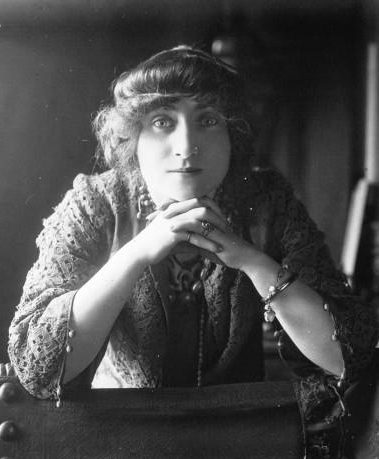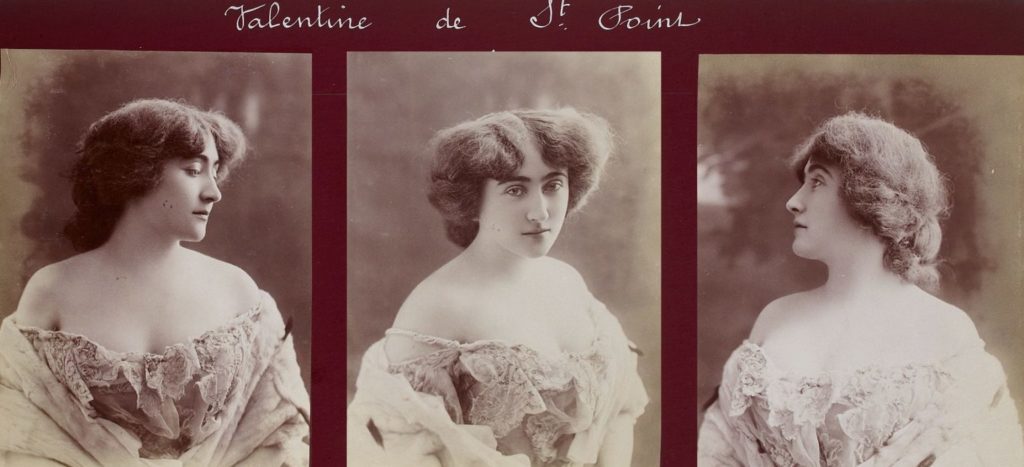Alexandre Lacassagne, the French forensic pathologist who published a book on tattoos in 1881, would have been astonished at, and puzzled by, the explosion of elaborate and professional tattoos in the general population in the last three decades.
At the end of Michel Houellebecq’s novel Submission (2015), the hollowed out academic whose existential journey we’ve been following finally acquiesces to Islam. It is an Islam that asserts the world as it is, and in which polygamy is prominently defended for its socially Darwinian potential.
This is not traditional Islam, in which the faithful are warned that mundane, temporal concerns can compromise their afterlife. It is rather a Nietzschean version of Islam serving as a counterpoint to “world-denying” Christianity and its supposed consequences. The inner poverty of Houellebecq’s protagonist is of a piece with that of a post-religious West, and the novel can be read as suggesting that this is, in turn, the inevitable result of the Christianity that preceded it a perfectly orthodox Nietzschean position.
Strangely, in the novel the Islamic takeover of France restores the Roman Empire—but as a Muslim-led government that spearheads the southward expansion of the EU. This is owing to a desire for connection with North African co-religionists, but it also indicates that the new paradigm is to be worldly and politically grand.
For Houellebecq’s newly converted first-person narrator, the principal consequence of these tectonic shifts is a recasting of the feminine. His lifelong dysfunctional approach to women is to be resolved by a regime of traditional match-making, which will furnish him with a wife or several, and an end to temptation, courtesy of new, restrictive dress-codes, banishing mini-skirts and low-cut blouses.

Houellebecq’s handling of these themes has a precursor that is worth examining. His speculation over political futures, French cultural innovation, Nietzscheanism, grand political unities with an eye to North Africa, overriding concern with the sexes and how they are to be harmonized, and Islam: these all also feature prominently in the work and life of Valentine de Saint-Point. Born Anna Jeanne Valentine Marianne Glans de Cessiat, she was an important figure of the late 19th, early 20th century avant-garde, close with artists like Alphonse Mucha and Auguste Rodin, and would become friends with the metaphysician René Guénon (whose thought, incidentally, Houellebecq misrepresents in his novel, perhaps intentionally).
The questions the present discussion seeks to answer concern why the loss of religious sensibility should manifest as a crisis of gender and family, and what it is that has led some seekers, in this case artists, to see Islam as a possible solution to this crisis.
Previously, we explored the idea that certain currents of thought have tended to identify dynamism, matter, nature, the world (the whole sphere of becoming as distinct from being) with chaos, so that order can only result from some outside force—the gods, man’s reason, etc.—imposing itself violently upon a fundamentally hostile world.
Insofar as femininity is traditionally identified with manifestation—and indeed, in theological terms, with the eternal paradigm that preexists the cosmos, and with God’s very power to manifest (Proverbs 8)—the above association of nature with chaos must problematize the feminine. In some primitive cultures, this took the form of denying the possibility of matrilineal inheritance, so that reproduction was understood as a male act through the female, like seed in soil, not the union of two seeds, which would require that they both contain equivalent (compatible, combinable) ordered paradigms.
Modern materialism of the sort Houellebecq’s academic is mired in, and which caused de Saint-Point such repulsion, is a recurrence of this metaphysical error. It tends towards devaluing traditionally feminine activities and spaces by increasing corporate and state control over them, especially reproduction and early child-rearing (usually presented as a liberation). Conversely, it celebrates a false image of femininity as the rebellion against structure and stability—shorthanded as “the patriarchy”. The corresponding false image of masculinity, then, appears as a force that constantly works to restrain chaos, never resting in itself or providing a truly stable center. It deviates from the equanimity inherent to traditional patriarchal figures.
Grasping this on some level, the artists we are discussing instinctively connect the moral exhaustion of western civilization to its loss of religion and its difficulty with gender difference. And yet, for Houellebecq, as for de Saint-Point, strident, bombastic nationalism or militarism, while seeming to regain an idealistic, heroic ethos, only repeats the error of materialism, albeit in its more archaic key:
We will glorify war—the world’s only hygiene—militarism, patriotism, the destructive gesture of freedom-bringers, beautiful ideas worth dying for, and scorn for woman.
So reads Filippo Tommaso Marinetti’s Manifesto of Futurism (1909), quoted by way of a counterpoint at the beginning of de Saint-Point’s Manifesto of Futurist Women (1912).

In this latter text, the French artist seems to be rejecting the idea of woman as pure sentiment—or, indeed, sediment, as incapable of direction or desire. She does not oppose men; she does not argue for female empowerment as rebellion or competition. For de Saint-Point, femininity is neither a seething chaos threatening to corrode male order, nor a supine chaos limited to receiving the imprint of that order. She sees women allied with men, united in purpose.
She writes that all persons should be endowed with virility and femininity: “The fecund periods, when the most heroes and geniuses come forth from the terrain of culture in all its ebullience, are rich in masculinity and femininity.” Failing to achieve this balance delivers us into periods either of war or stagnation:
Those periods that had only wars, with few representative heroes because the epic breath flattened them out, were exclusively virile periods; those that denied the heroic instinct and, turning toward the past, annihilated themselves in dreams of peace, were periods in which femininity was dominant.
We may note that both excesses of virility and femininity reduce the scope of “representative heroes,”—in one case, because they are “flattened” out under a general tumult; in the other, because they are “annihilated” in a nostalgic drift. In other words, for de Saint-Point, these two tendencies are not ‘order’ and ‘chaos,’ but twin paths to chaos, entropy, the loss of form—unless they can be made complementary.
Her own age, she diagnosed, was in need of the virile side of the spectrum, as a result of too long a feminine peace:
We are living at the end of one of these periods. What is most lacking in women as in men is virility. That is why Futurism, even with all its exaggerations, is right … we have to impose on everyone, men and women who are equally weak, a new dogma of energy in order to arrive at a period of superior humanity.
This “new dogma of energy” seems to be a compensatory measure to produce some future balance or complementarity between the sexes, but it is also presumably an end point meant to transcend both the sentimentalist and the “brute animal.”
And yet, her celebration of war-like virility can distract from whatever she might mean by “heroes and geniuses … rich in masculinity and femininity.” It is also unclear how compensating excessive peace with war will produce one of those “fecund periods” rather than an oscillation, a back and forth between sentimentality and savagery.
De Saint-Point is searching for complementarity, and the reason for her emphasis on the masculine is that she ultimately opts for gender differentiation in which masculinity defines the public space and femininity the private. She describes “duty” as principally male. A civilization that “looks” masculine, then, will be secretly, esoterically, feminine—it will be the result of women steering their husbands and sons properly. (As another French explorer of similar ideas, Henry Corbin, wrote, there is a sense in which esoterism is always feminine.)
This is why de Saint-Point rejects what she understands by feminism: “But no feminism. Feminism is a political error. Feminism is a cerebral error of woman, an error that her instinct will recognize.” It would lead to “an excess of order,” because “to give duties to women is to have her lose all her fecundating power.”
Instead, she emphasizes gender roles. Against Marinetti’s marshal “scorn for woman,” she imagines women polishing weapons: “When you have to use your weapons, she will polish them. She will help you choose them,” de Saint-Point tells men. She concludes by directing herself at female readers:
Don’t raise [your children] for yourself, that is, for their diminishment, but rather, in a wide freedom, for a complete expansion. Instead of reducing man to the slavery of those execrable sentimental needs, incite your sons and your men to surpass themselves. You are the ones who make them. You have all power over them. You owe humanity its heroes. Make them!
Importantly, then, despite talk of possessing the virtues of both genders, for de Saint-Point men and women are distinct.

She is not pointing us towards a balanced androgyn. Just as a crystal may reflect another object’s color without altering its shape, it appears that man is to possess female virtue as a man, and woman is to possess virility as a woman.
This conception would stay with her, but the context in which she wrote the above, the Europe of 1912, and the belief in war, or at least in modern warfare, as an ennobling force, was to suffer a significant blow. She served in the Red Cross during the First World War, and cannot but have observed how this conflict was failing to produce the kind of civilization she pined for.
And yet, she was to find it elsewhere—in foreign climes, among the minarets of Morocco. By 1918, she had entered Islam. This would have been in her early forties. She would continue developing her ideas, including so-called Mediterraneanism (the somewhat vague belief that Mediterranean peoples retain some necessary élan vital and that political unity should be sought between the sea’s two coasts), also becoming a known defender of Arab nationalism. Finally, in 1953, she died and was buried in her adoptive homeland of Egypt, under the name she had adopted years before, Ruhiyya Nur al-Din. Like Guénon (and possibly Corbin, at least intellectually and with an emphasis on esoteric Shi’a currents), the Muslim religion provided the context in which her existential explorations were finally satisfied.
From the gloomy acquiescing of Houellebecq’s academic, then, to de Saint-Point’s artistic seeking—from the conquered to the conscious convert, one fictional, the other real—we are presented with the intuition that irreligion manifests principally as a loss of the sense of masculinity and femininity, a breakdown of the relation between men and women, and therefore of the family.
This breakdown proceeds from a specific metaphysical error: the belief that reality consists of an irreducible, undercurrent of chaos, on the one hand, and the ordering agents that must violently restrain it, on the other—the sort of dualism only genuine monotheism can heal.
In searching for such healing, the above figures ultimately despaired of the West’s tradition as they found it. Today, if Europe is to enter a new, restorative cycle, it will not do to merely push against contemporary ‘woke’ elites and the consequences of mass immigration. Her defenders will have to attend to the lacks and dysfunctions that drove some of her most perceptive sons and daughters away.